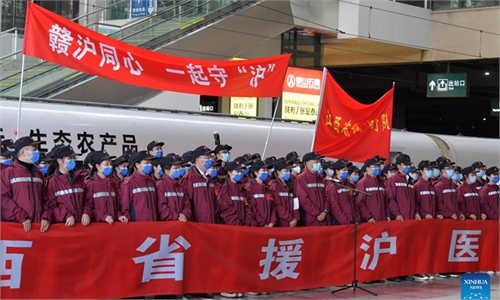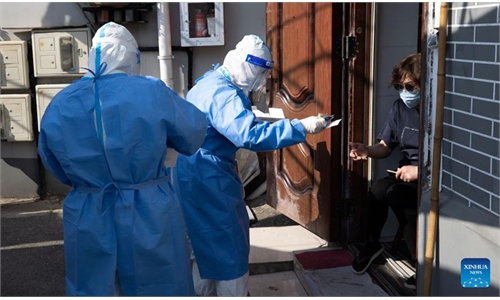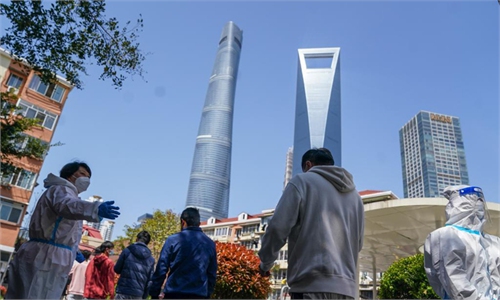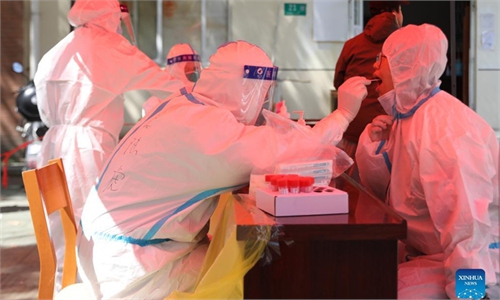2,086 +7,789! China's daily COVID-19 infections reach record high, with Shanghai most affected
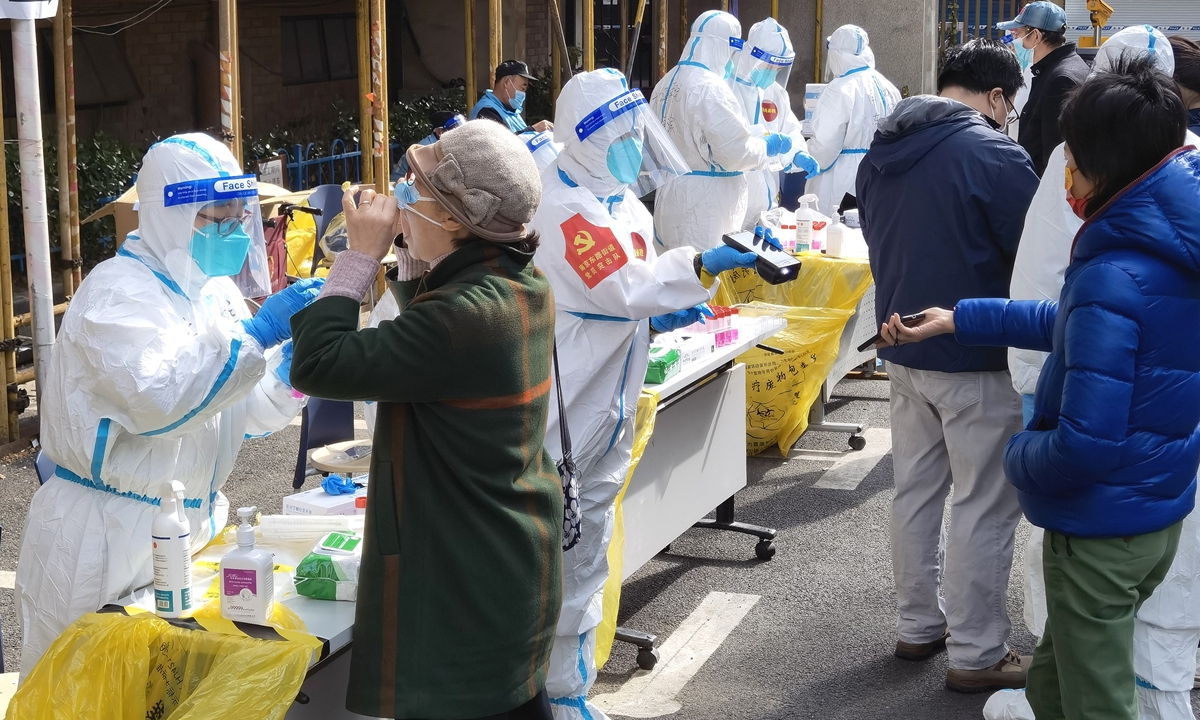
Photo: CFP
China's daily positive COVID-19 infections reached a record high as 2,086 confirmed cases and 7,789 asymptomatic cases were discovered in 24 province-level regions on a single day on Friday, with Shanghai registering the highest number.
Among the positive cases nationwide, Shanghai reported 260 confirmed and 6,051 asymptomatic domestically transmitted cases; Northeast China's Jilin Province registered 1,730 confirmed and 1,244 asymptomatic cases according to data compiled by the National Health Commission on Saturday.
Though the country's epidemic situation is still developing sporadically with the number of asymptomatic cases reaching unprecedented levels, eventually China will be able to achieve dynamic zero-case with a longer period of time than previous outbreaks, Wang Peiyu, a deputy head of Peking University's School of Public Health, told the Global Times on Saturday.
For Shanghai, experts believe though its epidemic scale is bigger than the previous Wuhan outbreak, its severity is lower in comparison. As much of the city is now in lockdown, the number of daily epidemic cases is likely to drop in a few weeks.
Local health authority from Shanghai attributed the city's surge of COVID-19 infections to the expansion of the range of mass screening. "The number of positive cases reported today has increased compared with the numbers of the previous two days because we screened more widely," Wu Qianyu, official from Shanghai Municipal Heath Commission, said during a press conference on Saturday.
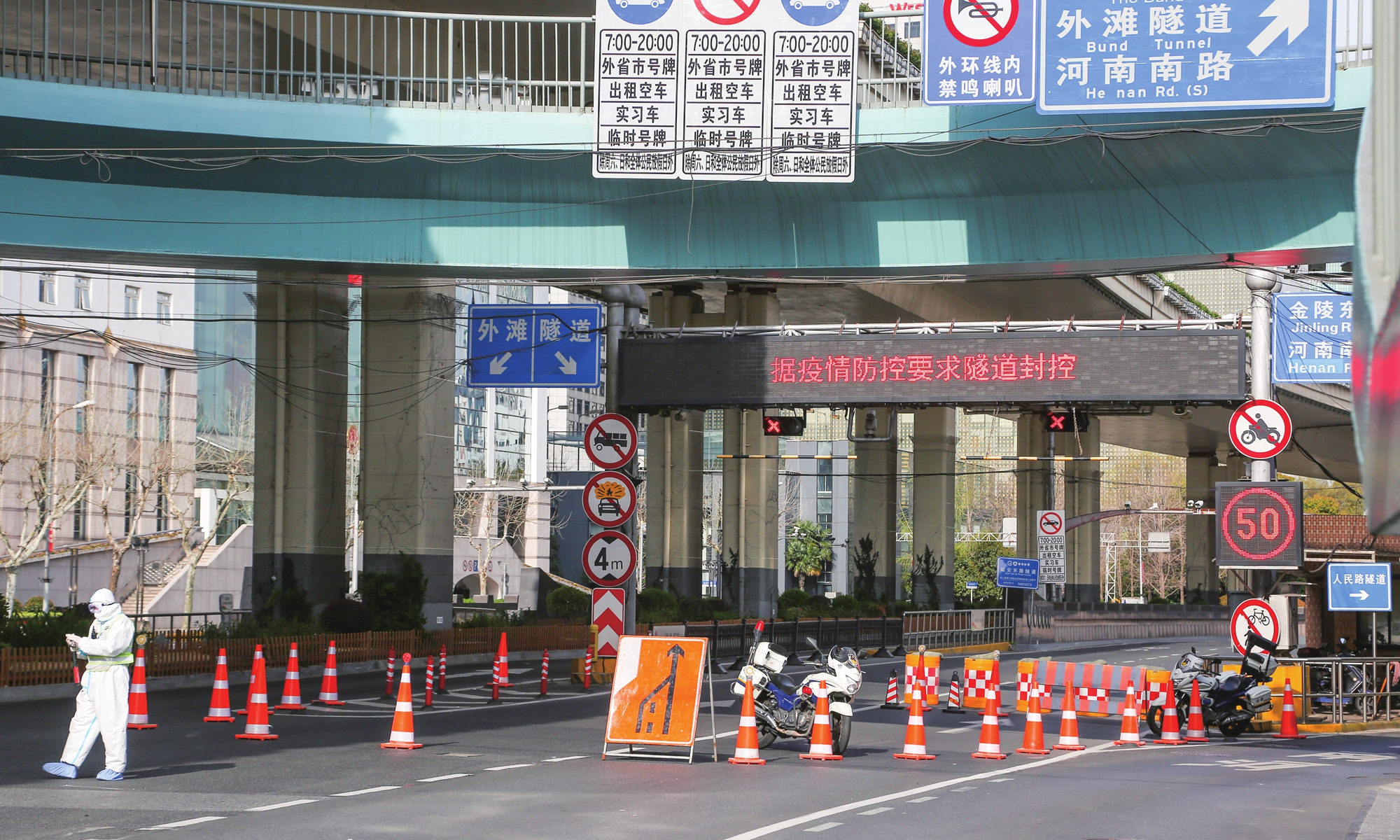
The tunnel connecting Pudong with Puxi is sealed off, with only a few cars with a pass allowed. Photo: Wu Chuanhua/Global Times
More than 14 million people in Puxi area took nucleic acid tests on Friday and the mass screening work will continue to be carried out on Saturday, according to the local health commission, noting that more people in a wider range of management will be involved in this batch of screening given the complicated situation. "Not a single household or a single person will be omitted," Wu said.
Since Friday, Shanghai has been under de facto sealed-off control.
The epidemic control in Pudong, Punan and neighboring areas will remain and was not lifted on Friday as scheduled, due to the results of the mass screening in the area. Local authorities said the area needs continuing strict control with residents in lockdown areas required to stay inside home and residents in sealed-off areas not allowed to leave their compounds.
And on Friday, Puxi, the area on the west side of the Huangpu River which has a population of over 16 million people, was placed under sealed-off control for mass nucleic acid testing.
The epidemic scale in Shanghai is bigger than the previous Wuhan outbreak but its severity is lower due to the lower virulence of Omicron, Chen Erzhen, the deputy head of Ruijin Hospital in Shanghai, said in an interview with People's Daily on Friday.
Despite registering more positive cases on Friday compared with the previous two days, it was not an exponential increase, Tao Lina, a Shanghai-based medical expert on vaccines pointed out, noting that since Shanghai has now adopted a "static management" measure, the new infections reported in the next few days will be in a stock volume.
"I believe the flare-up will be definitely controlled and it will take two weeks or so for the increase of new infections to drop to zero," Tao said.
If more asymptomatic cases in Shanghai are to be discovered as the epidemic progresses, there is a possibility that those asymptomatic cases who meet the quarantine condition can be quarantined at their own homes, Chen said, noting strict procedures must be followed by those who will quarantine at home.
Chen also attributed the high number of asymptomatic cases to the early detection of patients through large-scale screen-out. But he noted that recent percentage of patients with symptoms has increased to nearly 10 percent as previous asymptomatic quarantined cases developed symptoms.
As China's Tomb-sweeping Day holiday, also called Qingming Festival, starts on Sunday, Wang encouraged people not to travel to epidemic-affected regions and only travel within the provinces to reduce risk of being infected by COVID-19.
Besides Shanghai, COVID-19 infections continue to flare up in Jilin Province as community transmission has not been cut.
Officials from Jilin said at Saturday's press conference that the province is striving to deal with the difficulties and fix problems in its battle against coronavirus and achieve "dynamic zero'' in the shortest time.
The latest information released by the Jilin provincial health commission on Saturday showed to help the province contain epidemic resurgence, a total of 4,634 medical staffers from 11 province-level regions have gone to cities of the province to provide aid.
In Jilin Province, some 124,342 people were classified as close contacts and 71,968 were discharged from quarantine; the number of secondary close contacts was 110,438 people and so far, 85,608 have been released from quarantine, officials said at Saturday's press conference.
China's epidemic prevention and control situation remains severe and complicated, Wu Zunyou, chief epidemiologist of China's CDC said in an interview with a magazine affiliated with National Supervisory Commission. He said the public should be ready for a long battle against coronavirus.
The "dynamic zero" approach is still the most economical and effective policy for China. Only through this strategy can China avoid overwhelming medical resources caused by COVID-19, preventing a large number of deaths among the elderly or those with underlying conditions, Wu said.

